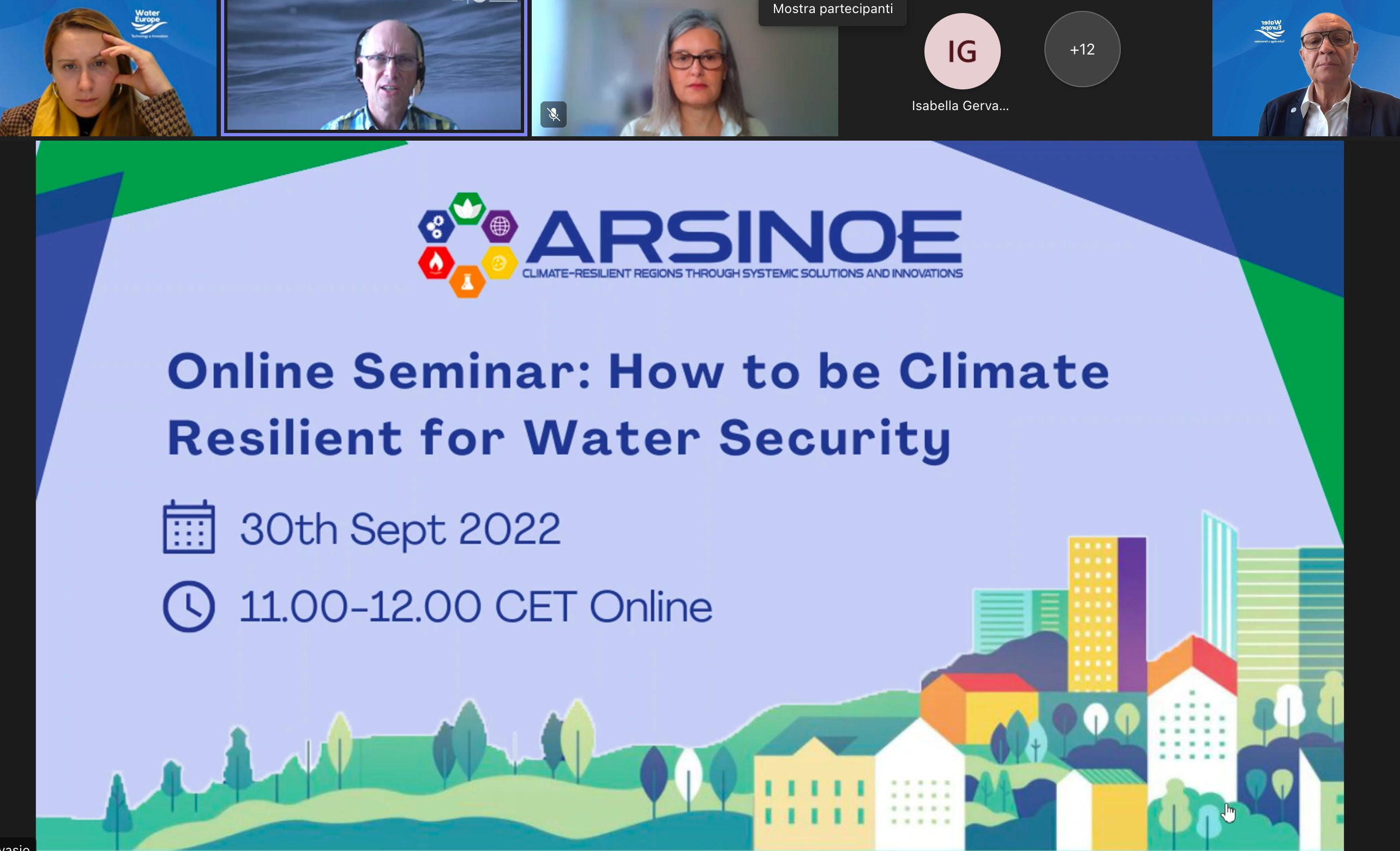The second ARSINOE clustering seminar about “How to be Climate Resilient for Water Security” was held online on Friday, September 30th. The seminar was chaired by Water Europe’s Director of Operations Andrea Rubini, together with the Water Security Working Group Team. The meeting addressed the partners of ARSINOE projects, TRANSFORMAR, IMPETUS and REGILIENCE. This seminar built a discussion arena around the definition of “water security” and its link with resilience.
Firstly, the seminar was introduced by Jan Hofman and Blanca Antizar, the co-leader of the Water Security Working Group. The main point that Jan brought up, was regarding the difficulty to find a commonly shared definition of Water Security. Some of the variables that influence the perception of the term depend on simple characteristics, such as where are the people defining it from, which organizations they work for, the scale you are looking at etc. In fact, Water Security can be applied as a concept in different concepts and dimensions. As an example, some definitions may refer to water stress or water availability, while others to climate hazards and vulnerability, or sustainability.
Moreover, not only there is not a wide consensus on definitions, but also the existing ones tend to overlap. One valuable source, according to Jan, was the original definition of the United Nations UN-Water in 2013, which involved the socio-economic dimension, together with healthcare-related issues, pollution, and political stability. However, even when one common definition is chosen to build on, the further step is to operationalize the concept itself.
To operationalize water security as a strategy, there is a need to identify a set of indicators, even if the concept is not easy to measure. Jon suggested that an Assessment Framework would incentive, boost, and steer people toward water security. To reinforce that position, Blanca presented some real case studies.
After the display of the case studies, Blanca summed up her position on resilience, stating that being climate resilient for Water Security requires innovative technologies, know-how, financial instruments, and governance. Be as it may, the biggest barrier for technology developers to enter the market is insufficient funding. In fact, 38% of technology start-ups that fail between 2018 and 2021 across all sectors experienced a lack of funds as the main cause.
Through other examples, the focus shifted to how usually the water sector is, like many others, a reactive sector, that acts after disasters happen. That complicates the process, as resilience by default already takes a long time. That adds up to the fact that to build resilience a lot of investments
are needed, coupled with long-term transboundary governance. The inputs of the moderators created the opportunity for a discussion, that explored various points of view.

